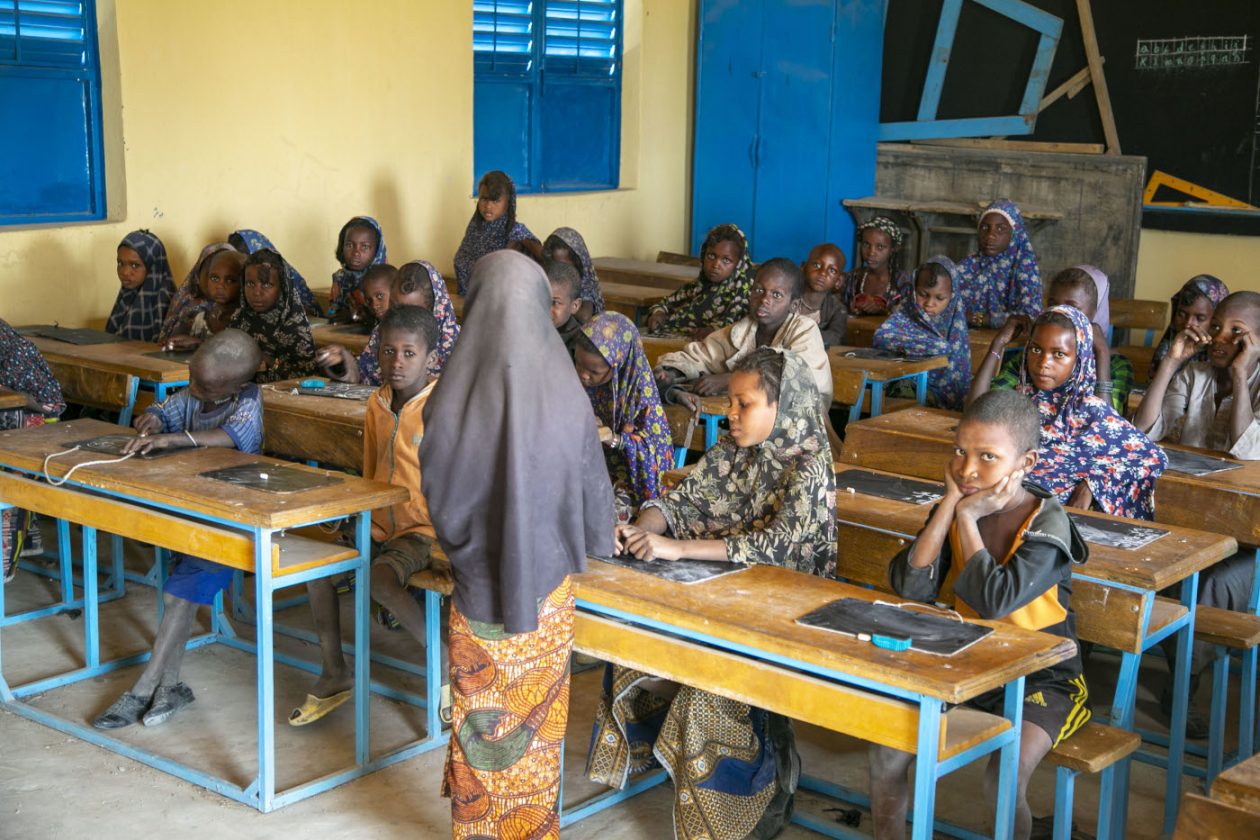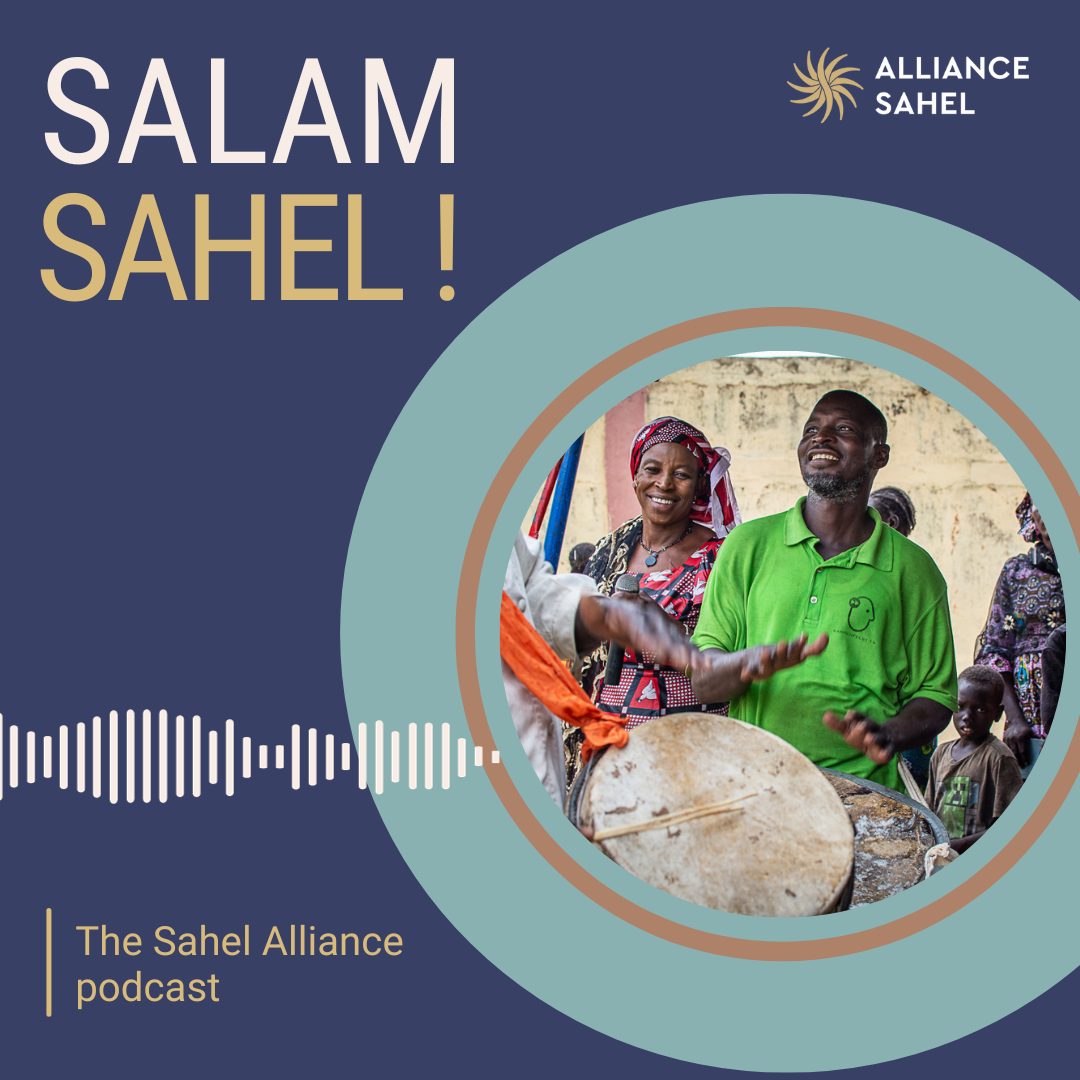Integrated Participatory Community Approach: The NGO Garkua Strategy
Since 2016, the NGO Garkua has been supporting Nigerien communities in sustainable and inclusive development. With humanitarian, economic and social challenges, the organisation relies on an integrated approach combining emergency aid, development projects and social cohesion strengthening. Sani Mourtalla, its permanent secretary, shares with us the strategies and challenges of this essential mission in Niger.

Originally from Zinder, Sani Mourtalla trained as an agricultural engineer. He has been working in the national and international NGO sector in Niger for almost 20 years. Since 2018, he has been the permanent secretary of the Garkua NGO.
Could you present us the NGO Garkua? What kinds of issues are you working on?
The Association nigérienne pour un développement durable (i.e. Garkua, which means “protection” in the national language) is an NGO under Nigerien law created in 2016 by development actors in Niger. Our aim is to help communities meet the various challenges they face.
We work in 3 sectors:
- Humanitarian aid, through responses to natural disasters (floods, droughts, etc.) and food crises.
- Development, by supporting communities to improve their agricultural and livestock production in order to reduce poverty, and by providing basic social services through the construction of school, health, water and other types of infrastructure.
- Strengthening social cohesion, through stabilisation programs implemented in Niger’s fragile regions, in particular Agadez, Diffa and Tillabéry.
What are the success factors for working in these three sectors: humanitarian, peace and development? Is the process complex? How do you manage the continuum between these three dimensions?
The areas in which we operate in Niger continually face these three challenges, so working in just one sector would not allow to address the needs of communities, and would not help us deliver the desired results. This pushes us to embrace the different sectors – humanitarian, development and peace – to make an impact.
Humanitarian needs are occasional needs that arise at specific times of the year. In our response to these needs, we lay the foundations for development actions. For example, for food crises or floods, we carry out “cash for work” actions to restore degraded land. The communities receive money to meet their immediate needs (food, health, resources to finance their children’s schooling) and at the same time, we rehabilitate the ecosystem, we rehabilitate degraded land that will be developed by these communities to produce more in the coming years.
We also make sure that all our activities are inclusive, that no one is left behind. This approach helps to reduce inequalities at community level, which are a major source of conflict.


When it comes to building bridges between humanitarian aid, development and peace, are you sufficiently supported by donors?
Many partners support us. We receive multi-sector funding, in which we are involved in emergency, development and social cohesion actions.
In addition, we are not alone in the communities we work with: we seek to create connections with humanitarian and development actors to provide an appropriate response.
In your opinion, what are the best practices that deserve to be replicated for interventions in fragile areas to serve the needs of populations?
We believe that integrated, participatory community approaches are a good practice. We have developed this approach, which empowers local communities and authorities to take charge of their own development. This integrated community-based participatory approach has been developed with several partners, including BMZ and UNICEF. It empowers communities.
Each village where we work has a village action plan and a village committee to ensure its implementation and planning monitoring. At commune level, we have what we call the “communal community involvement platform”, which is an initiative of the village committees that meet at commune level. This structure empowers communities to implement development actions at community level, even if the area is difficult to access for partners (NGOs, government bodies, etc.). A large proportion of the activities of the community plan carried out at village level can be implemented by the community itself, without the need for external funding. This is what we do in fragile areas to ensure the continuity of development actions. Furthermore, in areas where we have not developed this approach, we have community relays who are endogenous animators at village level, who can continue to implement activities even if access is difficult for NGOs.

What challenges are you facing in supporting communities in their quest for a better life?
The first challenge is limited resources. Niger is very vast, with 265 municipalities and tens of thousands of villages. The needs are enormous, and funding is increasingly scarce.
The second challenge is access. For some time now, access to certain communities and fragile areas has been difficult. Although we have put in place strategies to enable communities to continue to carry out development activities, this challenge persists.
The third challenge is in terms of the ability of communities to appropriate the strategies we are developing. With very low school enrolment rates in rural areas, there are villages where hardly anyone knows how to write. This complicates the assimilation of what is being put in place for development in certain communities.
Can you talk to us about coordination between the various development and humanitarian actors in fragile zones? How do you move forward together efficiently?
Much remains to be done to improve coordination between partners. We participate in a number of consultation frameworks, in particular via the thematic clusters coordinated by OCHA.
At regional and local level, concertation frameworks have been set up to bring together partners working in the same region or locality.
Where we work with Garkua, we support the communes in making this consultation framework functional. We are convinced that the most appropriate level for coordination is the municipal level. Periodic meetings are organised with all stakeholders, around the local authorities, to share planning.
We are in the process of introducing joint planning at municipality level. All the partners working in a given municipality meet at the start of the year to draw up a joint plan, to ensure coherence in terms of humanitarian, development and peace nexus. This also avoids duplication of activities or uncovered needs.

What recommendations would you make to get civil society and NGOs more involved in implementing the integrated territorial approach promoted by the Sahel Alliance?
The integrated territorial approach is a worthy approach. My first recommendation is to create a steering committee to ensure that all decentralisation stakeholders are involved in this process. The aim is to create a framework in which all decentralisation stakeholders can be found around the integrated territorial approach strategy.
The second thing is to involve civil society more since it is closest to the communities. At Garkua, we work with civil society organisations to raise awareness of the integrated territorial approach among communities and local authorities. The aim is to enable them to gain a better understanding of this approach, grasp the issues at stake and become actively involved in its implementation.
The third recommendation is alignment since, as part of the integrated participatory community approach we are implementing, all the villages we work in have an action plan that serves as the basis for the design of communal development plans. All actors in the field need to be aligned with communal and village development plans.
Could you tell us more about your collaboration with the Sahel Facility? What activities have been implemented with their support? Does their support lead you to implement a slightly different approach?
Garkua is the beneficiary of 6 million euros in funding from the Sahel Facility for the implementation of a project called: “Project to support socio-economic stability and peace” (Projet d’appui à la stabilité socio-économique et à la paix), in 4 municiplalities in the Tillabéry region.
The project covers 3 key themes:
- promotion of basic social services: construction of water, health and education infrastructures;
- promotion of livelihoods: improving agricultural production and livestock practices, restoring ecosystems;
- promoting peace and social cohesion by strengthening ties between communities and community-based socialisation activities.
This project is essentially based on an integrated participatory community approach. We are working on community planning, which is a variation on municipal planning. Everything we do must emanate from it. This project is fully in line with the Sahel Alliance’s integrated territorial approach, which calls for local authorities and communities to take responsibility for the actions that concern them.


Personally, what motivates you and gives you hope in your work with communities in Niger?
What motivates me is that communities have extraordinary capabilities. It makes me want to continue working with them, to achieve extraordinary results. The big mistake development actors often make is to consider communities as beneficiaries. We see communities as partners, and are achieving extraordinary results by building on local capabilities.
The second thing that motivates me is youth. Over 70% of the population encountered in the villages are young people. We need to develop the capacity of these young people so that they can be the future of our country. If left in the situation it is now, it could become a long-term problem for the country. This motivates me to continue working within communities to build the capacities of these young people, to offer them training or employment opportunities so that they can become development actors, but also so that they can participate in the local governance of their community.
More info


